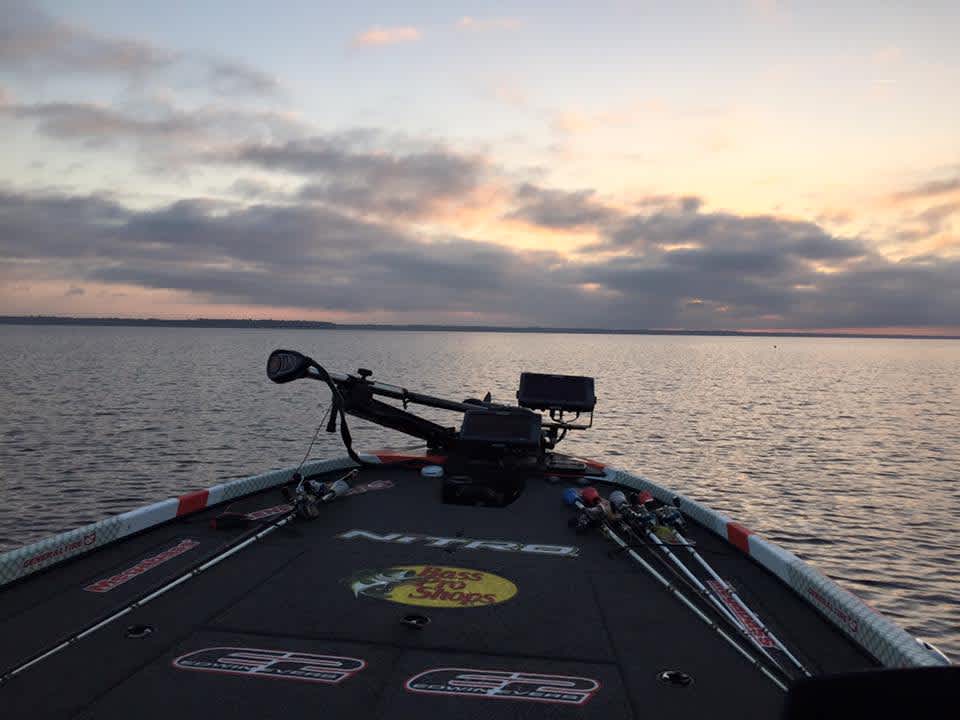How to Catch Springtime Bass in High Water
Edwin Evers 05.11.17

In the spring and early summer, bass fishermen can pretty much count on having to deal with changing weather conditions and water levels that can rise and fall in just a matter of days. This year has been one of the worst, with parts of Oklahoma, Arkansas, Missouri and on up through the Northeast being absolutely flooded. A lake right near my home went from being 10 feet low to 30 feet high in 5 days, for example. That’s a drastic case, but it shows what can happen anywhere across the country this time of year. And any sudden change presents a challenge to a bass angler.

Today, and in my next blog, I’m going to talk about ways fishermen can combat high water, and changing water conditions. While there are a lot of similarities in the approach you take for prespawn/spawning bass vs. fish in a post-spawn/summer pattern, there are enough differences that I’ll focus only on the first stage here; we’ll discuss post-spawn/summer bass next time.
Anywhere you fish, water levels can rise and get muddy overnight, and when it happens during a tournament, competitors face the same challenge weekend fishermen often face—you’ve got 1 day to figure things out and catch fish.
The first thing I do is determine exactly how far the water has come up. Sometimes you can find this out online; other times you’ll have to look for a scum line on rocks or dock pilings to see where the level was before it rose. Then I want to know whether the water is still rising, or has it stabilized, or is it falling.

It takes a few days for the prespawn or spawning bass to begin to use that new water. In other words, if the lake rose recently, maybe still rising, they’ll be in the same places they were before the water started to come up. So, if I found fish before in 3 to 4 feet of water and then the lake rose 4 feet, I know that I’ll have to look for the cleanest water available and target 7- to 8-foot depths. And because the bottom there would be more open, I’d probably go with something like an 7/16- or 9/16-ounce Andy’s E Series Finesse Jig (above). If the water is clear, another option would be mojo or finesse-type Carolina rig, maybe with a Zoom Centipede or 5-inch Lizard. If the water was a little dingy, I might fish a Carolina rig with a 6-inch Lizard or a Zoom Brush Hog (below).

Now, if the level has been high for 3 to 5 days, it’s a different story. In my experience, it takes about 3 days for fish to start going up into that new water. And if it’s still rising, or stable, I’ll follow them into the shallows. But it means there will be a lot of real estate to cover, with the same number of fish using that bigger area. I’m going to turn on the afterburners and cover water as fast as possible.

I’m going to tie on baits that allow me to do that—something like a War Eagle buzzbait (above) or spinnerbait, or even a shallow-diving Megabass S-Crank 1.2 (below) because I’m looking for fish scattered over a wide area. I won’t try to fish every nook and cranny, but I will look for cleaner water. Unless, of course, the inflowing water is warm.

It happens sometimes when the rain coming down is several degrees higher than the lake water. That warm inflowing water is like a magnet for baitfish, even if it’s muddy, and I get real excited about finding something like that.
When the water does start to fall, it may be well past that prime 62-degree spawning temperature. In that case, most fish won’t spawn. They’ll back out and maybe try again during the next full moon, or they won’t spawn at all.
Those that do try to spawn will do it deeper—usually at about the depth where you just can’t see the bottom anymore.

High water and rising water add some difficulty to bass fishing, for sure, but if you think about it, you can figure out where prespawn and spawning bass will be with a fair degree of accuracy. Then, you have to use tactics that match their behavior. Next time, we’ll talk about what happens when lake levels suddenly rise during the post-spawn/summer period.
Until then, good luck fishing.


